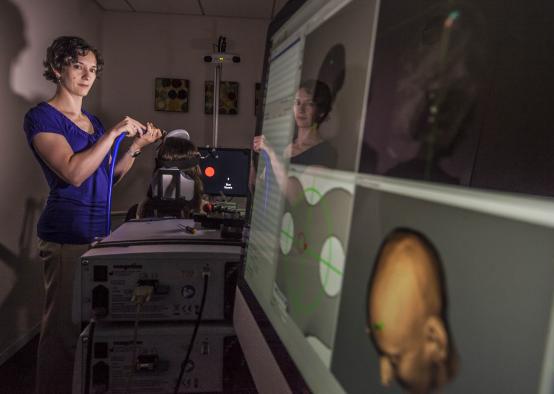PROVIDENCE, R.I. [Brown University] — If you sometimes feel like you have a little foreman in your head who keeps you on track while you work step-by-step through a sequence of tasks, you aren’t far off. In new research, Brown University scientists report evidence that a particular part of the brain is responsible for exactly that function.
This isn’t just an everyday aspect of psychology; it’s an every minute one. Think of your morning. When you hit the shower there was a sequence of things to do: wash here, then wash there, then shampoo, then maybe shave. Get dressed, pour coffee, grab keys, turn on the cell phone, remind the kids to take their backpacks, kiss your spouse. No one cued you about what to do next, but you remembered to get them all done.
“We’re interested in the errors people make in everyday sequences of behavior,” said co-author David Badre, associate professor of cognitive, linguistic, and psychological sciences. “You have to internally monitor where you are and what you are doing.”
What keeps you on track in these sequences of cognitive steps, Badre and his colleagues report the journal Neuron, appears to be a network of areas in the brain that includes the rostrolateral prefontal cortex (RLPFC), an area of neurons situated in the front of your brain.
Scanning and stimulating
In the research, the team led by postdoctoral fellow Theresa Desrochers gave volunteers four-step sequences of tasks to work through. People had to note either the shape or color of a series of four images in different orders that they’d have to remember as they went along (e.g., shape, shape, color, color or shape, color, color, shape, etc.)
Meanwhile the scientists including co-author Christopher Chatham used functional magnetic resonance imaging (fMRI) to study the patterns of brain activity in the RLPFC and other regions as the volunteers did the task. The scientists also did experiments where they used transcranial magnetic stimulation (TMS) to briefly alter brain activity in various regions and at different times during the sequence to see how that affected the volunteers’ error rate.
What they found via fMRI was that the RLPFC increases its activity as people progress among the four steps in each new sequence. At the beginning of the next sequence, it drops down and then ramps up again as people move through the next four steps.
The researchers hypothesized that this ramping could mirror the increasing uncertainty people would have about where they were in a sequence the farther they moved through it. But more tests were needed to determine whether the RLPFC is necessary to that process and what would happen if it were perturbed.

David Badre and Theresa Desrochers said their results suggest that the rostrolateral prefrontal cortex resolves increasing uncertainty as we move farther into a task sequence.
Image: Michael Cohea/Brown University
TMS offers that opportunity. In its clinical application, psychiatrists use the technology to stimulate the brain repeatedly for a long time and over many sessions in order to treat symptoms of depression. For research it can produce very quick, small (and safe) electromagnetic stimulation that briefly and non-invasively elicits the neural activity of a precise region of the brain.
“This volley of neural activity is akin to static over a phone line, noise that other neurons listening in cannot interpret,” Badre said.
The team used that capability to find out what happens to sequential task performance when the RLPFC (and other control regions) are disrupted at different times during the task.
The main findings of these experiments were that perturbing activity uniquely in the RLPFC led to rising error rates as the timing of the TMS pulse occurred later into the task sequences, mirroring the ramping dynamic observed in the fMRI experiment.
With this evidence, here’s what the researchers think is going on.
With each step, the RLPFC has an increasing amount of uncertainty to resolve and the researchers see the ramp up in activity. The later the TMS stimulation, the more errors it can cause.
“When we disrupt it we are disrupting that process of resolving the uncertainty,” Desrochers said. “We therefore get this increasing pattern of errors because there was more uncertainty to be dealt with.”
The researchers watched and manipulated other brain regions during the experiments but the RLPFC was unique in increasing its activity as people moved unguided through a sequence, and unique in yielding an increasing likelihood of error if perturbed later into the task sequences.
The study helps explain what makes the healthy behavior work, Badre said, and could also provide important information for psychiatrists and neurologists in clinical cases.
“The health consequences are big,” Badre said. “Cognitive control of behavior is very fragile, and it is easily disrupted by neurological disease and disorder, like stroke or traumatic brain injury. Among the major complaints in everyday life among these patients is an inability to complete multistep tasks.”
The National Institute of Neurological Disorders and Stroke, the Alfred P. Sloan Foundation and the James S. McDonnell Foundation funded the study.

